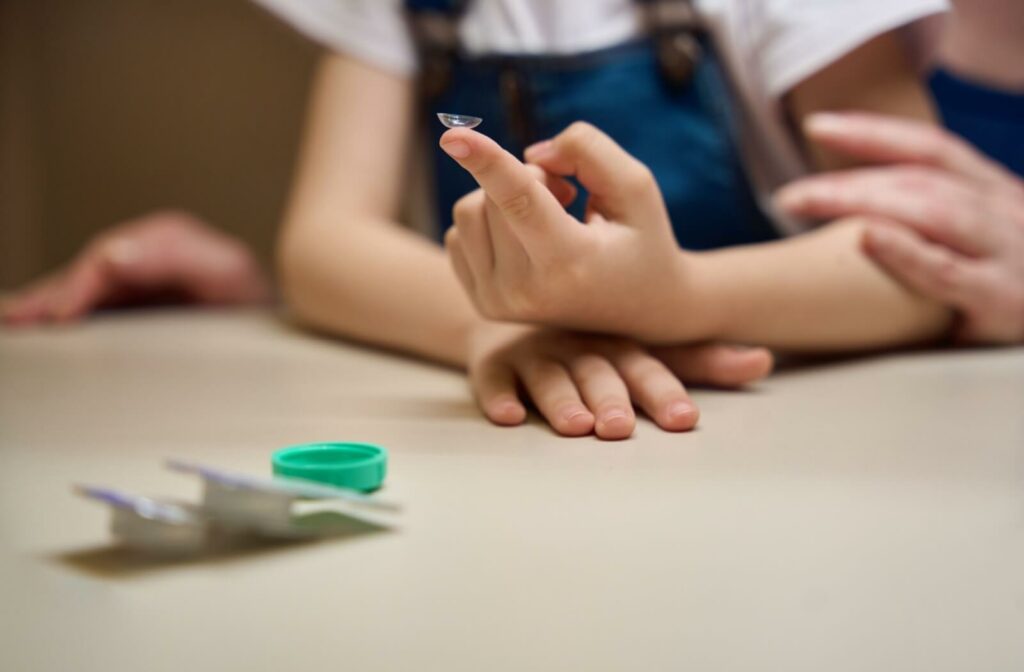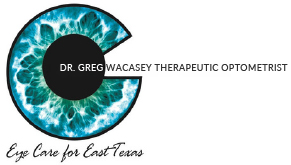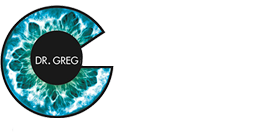With the school year approaching, many parents are preparing their kids for lots of reading, writing, and looking at chalkboards. Some parents may notice their kids display aversion or discomfort with these tasks, and may wonder if their kids are developing myopia (otherwise known as nearsightedness). This can be a concern, especially if parents have myopia themselves.
Myopia tends to get worse as a child grows, but it tends to stabilize in the late teens or early twenties. It’s also possible for myopia to progress in adulthood. If you suspect your child has myopia, take them to an optometrist for a comprehensive eye exam. Thanks to myopia control methods like orthokeratology, there are ways we can slow a child’s myopia progression.
What Is Myopia (Nearsightedness)?
Otherwise known as nearsightedness, myopia is a condition in which people find it more difficult to see distant objects. This happens because the shape of the eye makes light focus in front of the retina rather than directly on it. (The retina is located at the back of the eye and is lined with light-sensitive cells that relay signals to the brain via the optic nerve.)
Why Myopia Happens
Myopia usually happens when the shape of the eye is too long and oval rather than spherical. It can also happen due to issues with the cornea and lens of the eye.
Myopia has a genetic component, and having a family history of myopia puts children at greater risk of developing it themselves. Other risk factors for nearsightedness include prolonged time spent on near work, such as using screens, reading, or detailed crafts. Not spending enough time outdoors can also raise the risk of myopia.
How Myopia Progresses With Age
Myopia usually gets worse as a child grows up, but it tends to stabilize once a person reaches their 20s. It’s possible for adults to develop myopia, but this is usually caused by excessive stress on the eyes or an underlying condition, such as diabetes or cataracts.
High myopia, defined by the American Academy of Ophthalmology (AAO) as needing a prescription strength of -6.00 diopters or more, usually stabilizes between the ages of 20 and 30. A 2022 study found that, in over one-third of adults, myopia progression continued throughout their 20s.
If you’re an adult and you notice sudden nearsightedness, floaters, flashes, shadows, or even loss of vision in one eye, find an eye care professional right away. There may be another serious health condition going on.
Signs & Symptoms of Myopia in Children
Children aren’t always the best at articulating how their vision feels. If you notice the following signs or symptoms in your child, consider taking them to an optometrist:
- Complaining that things far away look blurry, such as the chalkboard at school
- Eye strain, headaches, and frequent squinting and eye-rubbing
- Struggles at school and lack of focus
- Holding things like books close to their face
According to the American Optometric Association (AOA), school-aged children ages 6 to 17 should get an eye exam before first grade and once a year thereafter. Children deemed at higher risk of eye conditions may require more frequent exams.

Benefits of Myopia Control for Children
Receiving a diagnosis of myopia for your child can be challenging, especially if you have myopia yourself and are familiar with the challenges it brings. Fortunately, modern eye care offers ways to control myopia and slow its progression.
These methods can go beyond slowing the progression of myopia; they can help protect eye health, too. Severe myopia stretches the retina, putting people at increased risk of some eye diseases.
Methods to Control Myopia
Common myopia control methods include atropine eye drops, certain types of eyeglasses, certain types of contact lenses, and orthokeratology (orth-k) contact lenses.
Orthokeratology is offered by our clinic, and involves wearing a type of contact lens overnight. The lenses reshape the wearer’s cornea overnight and don’t need to be worn during the day.
Ways to Prevent Myopia
Because there’s a genetic component, you can’t always prevent myopia, but you may be able to lower your child’s risk by:
- Encouraging them to spend more time outdoors
- Limiting the time your child spends on screens
- Being mindful of how much time your child spends on near work, such as reading or detailed crafting
Regular eye exams can help monitor a child’s eye health. The sooner myopia gets diagnosed, the sooner you can start myopia control.
Explore Myopia Control in East Texas
As a parent, you want your child to reach their full potential, whether it’s in academics, sports, or fine arts. While it’s not an uncommon condition, myopia can make reading, writing, and learning more difficult.If your child shows signs and symptoms of myopia, or if they’re simply due for their next comprehensive eye exam, contact us to book an appointment. You can also learn more about our team at Eyecare for East Texas.




